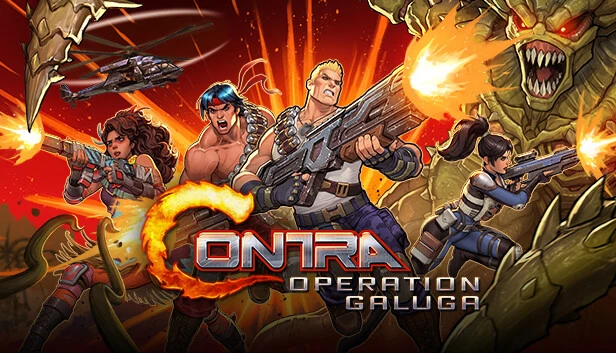- 17 Posts
- 62 Comments
Symlinks are fully transparent for all software just opening the file etc.
If the software really cares about this (like file managers) they can simply ask the Linux kernel for additional information, like what type of file it is.
You got some good answers already, here is one more option: Create a *.desktop file to run sudo alsactrl, and copy the *.desktop file ~/.config/autostart (Might need to configure sudo to run alsactrl w/o password.)
IMHO the cleanest option is SystemD.
Nah, didn't mind the meme!
I totally accept that Eclipse doesn't work for and life is too short to waste it on tooling.
In that sense, good luck with your current & future setups and happy coding! :-)
Eclipse has its share of problems (and outdated UI and workflows), still I'll happily use it over IntelliJ w/o hesitation.
Funnily enough, a lot of other (Java)Senior developers who tried both are fine with Eclipse, too.
Besides the astroturfing from IDEA which is really annoying, Eclipse integrates far better with standard build tools and is our last descend Open Source IDE (Netbeans effectively being a zombie at this time).
IDEA is already pushing/forcing their own solutions/build tools/etc. to up sell their shit, once Eclipse is gone, there will be no alternative and IDEA/IntelliJ will start the entshittifaction....
People really forgot what a shit show were the 90s, paying lots of money for commercial IDEs.
I know you mean good, but exactly this is the problem: Fix known issues with KMail or with KMails backend? - Nope. Write a new E-Mail client which someday, in the far future might work and have all the features we need? Let's go!
IMHO Evolution had the benefit, that it initially was written by Ximian and brought up to be good enough(TM). Honestly, I don't see anyone investing this time, money and energy in a new KDE email client (or in KMail).
In theory, I would love to use KDE and use Gnome only with many plugins and tweaks (like IMHO the majority of Gnome users out there, see Ubuntu desktop).
In practice, KDE has still too many unsolved problems:
- For years now, I try KDE from stable mainstream distros in standard VMs, always something from the vanilla KDE setup segfaults within the first 30min w/o me even starting to customize it. It seems this is not only a personal anecdote, but the experience of a lot of people trying KDE. (Gnome in these VMs runs stable w/o any segfaults, these VMs sometimes are running for days)
- KMail ... even the KDE community themselves point out all the trouble with KMail: It works, until it doesn't, no support for GMail OOTB, etc ... This problems with KMail are known/reported/experienced for years now, w/o being fixed. Thunderbird/Evolution work OOTB and stable for my needs since a decade by now
- Online-Accounts for Gnome works on every distribution OOTB for me, for all my professional/private needs. Again, in theory Dolphin is a much better file manager than Nautilus, in practice I can remote mount everything in Nautilus
In summary: I am not a big fan of Gnomes UI and would much prefer KDE, but in practice Gnome works stable, lets me setup my online accounts/connectivity and email and simply works. The KDE community ignored too many of this issues for too long (stability) and is still ignoring the widely known issues with KMail (fix it, dump it or at least communicate it is not ready for general use). I lost trust that these issues will ever be fixed by now. (Was a happy KDE 3.X user back in the day.)
- wolf@lemmy.zipto
 ·5 months ago
·5 months agoAgreed. I am more speaking of 'in general', for example there was a supply chain attack on a widely used npm package by writing an email to the author of the npm package. There are other 'cheap' attacks like dependency confusion, typo squatting etc.
Dark Souls Remastered, haven't beat it, yet. There is something which always calls me back and this time I am making rapid progress. :-)
- wolf@lemmy.zipto
 ·5 months ago
·5 months agoMandatory XKCD: Dependency
- wolf@lemmy.zipto
 ·5 months ago
·5 months agoSupply chain attacks are extremely cheap/easy and very effective, so get prepared for more of them in the future.
It really bothers me, that many companies make billions utilizing open source without contributing money/employees etc. to secure/supply/maintain supply chains.
I used it in the past, and it is great.
Nowadays, I bought a mid price router from a well known brand, and seriously: The router works, has all features I need (even WireGuard OOTB) and for now I see no reason to replace the provided firmware with OpenWRT. YOLO!
No worries, I love the classics and never played StarFox64, put on my backlog!
Thanks, looks exactly like my kind of game!
Nice! I'll have to play Subnautica! :-)
- wolf@lemmy.zipto
 ·6 months ago
·6 months agoNever played Contra 4, just the NES Contra and Super Contra, is Contra 4 worth to play?
I have to admit I did not even notice that there are no sprites. What the demo totally nailed are crisp controls, pacing and mostly level design. (Mostly, because my nit picks would be, that the weapon pods/upgrades use the same red as the enemies, which makes them hard to see sometimes, and even in Arcade mode there are some animations (helicopter crash, boss on top of the waterfall) which are so long they break the flow, a little bit too easy for a Contra.
Still, I am looking forward to next Tuesday!
- wolf@lemmy.zipto
 ·6 months ago
·6 months agoThank you for suggesting Ubuntu Core.
In the setup instructions it explicitly says to connect the Pi to a monitor.
Do I miss a magic config file for headless setups?
Why do you suggest Ubuntu Core over Core/Micro OS or Fedora IoT?
I know of dietpi, but I don't see any benefits compared to a properly configured Raspbian setup (The smaller memory footprint and lower process count is IMHO offset by having an additional party in my software supply chain).
The setups are security critical and at the same time, I would like to have one setup which I can 'forget' about until the hardware fails. Daily backups are done and of course my servers are provisioned automatically.
- wolf@lemmy.zipto
 ·6 months ago
·6 months agoReally, Ansible doesn't matter, the IaC part is the killer.
Just start to put your config into code and learn, over time it will grow!
I cannot go back to setting desktops/servers up by hand, IaC just solves too many problems and gives me peace of mind.
- wolf@lemmy.zipto
 ·6 months ago
·6 months agoYes, I really love the Silverblue download in the background, reboot and you are up to date updates. So much better than watching the package manager do its thing. :-)
I don't know about your knowledge about Ansible, and when you are already running Silverblue and are happy with it, it might be more worthwhile for you to explore how to automate Silverblue and the containers you are using... and write a blog post for people like me, how you did it, so I can learn. :-P
Ansible... basically it allows you to install software with the package managers (apt, dnf, ...), configure/restart etc. services, clone git repositories, run arbitrary commands, configure stuff with dconf.
Example for my workflow:
When Debian 12 got into the alpha stage, I simply set up a virtual machine, install git, ansible and vim, and then I start from a known starting place (like Gnome Desktop for desktops, minimal for servers). First, I clone my git repository with my dotfiles, and link all the relevant dotfiles. After that I simply use Ansible to install all packages I will use from that distribution, run dconf to configure Gnome for my needs, configure/download software from 3rd party package repositories or just download tarballs and install them to /opt or ~/opt. Of course also flatpaks can be configured/downloaded via Ansible.
Once, everything works great in the virtual machine I will work in the VM for a few days or even weeks. If everything works stable I'll just make a clean install of the operating system, add some hardware specific tweaks (change grub config, tweak WIFI drivers power mode) and then I am up and running. Thanks to Debian, my Ansible configs are mostly stable with minor tweaks for around 2 years, and when time is due for Debian 13, I'll repeat the cycle.
The way I do things with Ansible have grown for a long time and are tailored to my private/professional use cases. I simply like having the same setup on every desktop/server I deploy, because I never have to wonder, if my software is configured in the way I like it, if a hotkey works or if something I use is installed or not. (And if my hardware dies or I do an SSD upgrade, I am up and running within minutes, same is true if I get new hardware.)
Still, it is a tradeoff. I really like Fedora, but one year of updates is too short for me and my initial investment to setup a new version of Debian. Further, I only use dconf based desktops like Mate or Gnome, because I can simply configure them painless 100% via Ansible. OTOH I have MY Debian desktop setup running on multiple AMD64 and AARCH64 physical and virtual machines. If I want to experiment with software, I just create a VM, start Ansible, get a cup of tea and I have a disposable machine to play around. Further I have my setup 100% documented, if I wonder, what strange power settings tweak I needed in which file to make Debian 11 work on my netbook, I know were to find the 100% correct answer..
Excuse the wall of text, hope that gave you an idea, don't hesitate to reach out if any questions are left. Obviously, you have to decide for yourself if such a setup is worthwhile for you. In case you use only one Desktop, this would be total overkill. :-P
- wolf@lemmy.zipto
 ·6 months ago
·6 months agoNice, thank you very much for this great summary!
In my own words, you describe the difference between declarative vs. imperative configuration and the joy of atomic updates. :-)
I just want to add one point: Theoretically I totally agree, that one might have a bad state in Ansible and the updated state is spoiled, and of course configuration drift is a theoretical problem via Ansible. In practice I never run into this problems in 10+ years of using Ansible. (Of course I treat servers/desktop as cattle, so every major revision of Debian means a complete/clean new installation.)





How do I enable DNS over HTTPS or DNS over TLS for all connections in NetworkManager in Debian 12?
It is easy to configure custom DNS servers for all connections via a new .conf file in /etc/NetworkManager/conf.d with a servers=8.8.8.8 entry in the [global-dns-domain-*] section.
How can I configure NetworkManager to use DNS over HTTPS or DNS over TLS via a conf file?